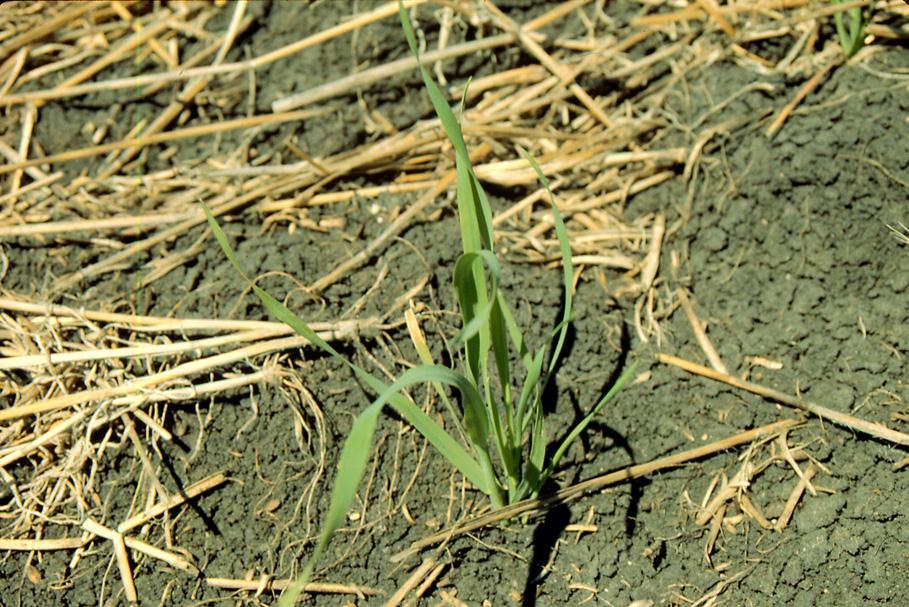Problems Caused by Volunteer Wheat
 The most important reasons to control volunteer wheat are:
The most important reasons to control volunteer wheat are:
- Wheat curl mite/wheat streak mosaic virus;
- Take-all;
- Bird cherry oat aphid/greenbug/barley yellow dwarf virus;
- Hessian fly;
- Russian wheat aphid;
- Banks grass mite;
- Reduces moisture loss.
The most important threat from volunteer wheat is the wheat streak mosaic virus complex. These virus diseases cause stunting and yellow streaking on the leaves. In most cases, infection can be traced to a nearby field of volunteer wheat - although there are other hosts, such as corn, millet, and many annual grasses, such as yellow foxtail and prairie cupgrass. Control of volunteer is the main defense against the wheat streak mosaic virus complex.
Wheat streak mosaic virus is carried from volunteer to nearly planted wheat by the wheat curl mite. The curl mite uses the wind to carry it to new hosts and can travel up to half a mile from volunteer wheat. The wheat curl mite is the vector for wheat streak mosaic, the High Plains virus, and triticum mosaic virus. In addition, the mite can cause curling of leaf margins and head trapping.
Take-all is a serious root rot disease in continuous wheat. Take-all's weakness is that it has trouble surviving through the summer. Volunteer provides a "green bridge" between the old crop and the new crop and allows the take=all fungus to survive and reproduce during the summer.
Volunteer wheat is a host of barley yellow dwarf virus, and the greenbugs and bird cherry oat aphids which carry it. If volunteer wheat is present when greenbug or aphid infestations occur, the insects will find a home on the volunteer and possibly infest planted wheat later.
Hessian flies survive over the summer on wheat stubble. When the adults emerge they can infest any volunteer wheat that may be present, which will keep the Hessian fly population alive and going through the upcoming crop season. This insect often causes significant damage, especially in the eastern two-thirds of the state. Hessian fly larvae attack young wheat plants near the soil line. Tillers may be stunted and later may lodge. In heavy infestations, the whole state may be lost. The Hessian fly normally has a spring brood and a fall brood. In years with a wet summer and/or a long, open, call, there can be two broods of Hessian fly in the fall; this is even more likely where volunteer is allowed to grow and become infested early.
Russian wheat aphids may also live over the summer on volunteer wheat. While this insect has wings and can be wind borne for hundreds of miles, the vast majority of fall infestations in Kansas appear to originate from nearby infested volunteer.
A number of other pests are also associated with the presence of volunteer wheat. An example in western Kansas is the Banks grass mite. During some years, infestations become established during late summer and early fall on volunteer wheat. Later, as the quality of the volunteer